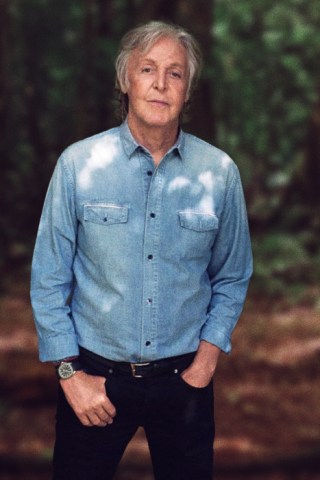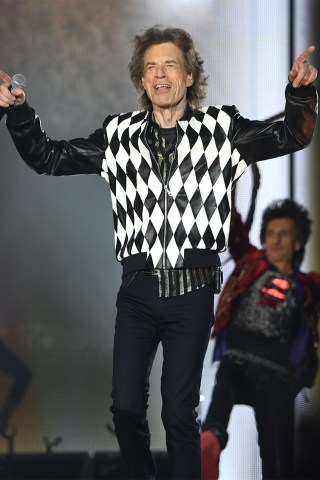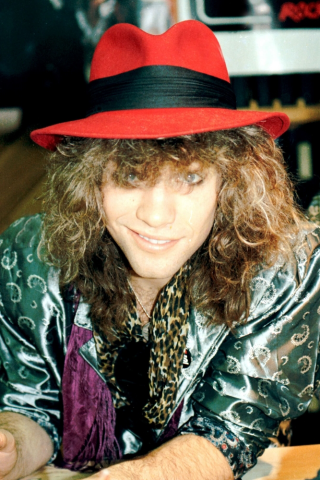Jann Wenner Talks Befriending Mick Jagger, Feuding With Led Zeppelin, and Why He Rejected One of Howard’s Rolling Stone Covers
Media magnate also gets candid about his relationship with John Lennon and Yoko Ono
October 3, 2022
Rolling Stone founder, editor, and publisher Jann Wenner joined the Stern Show live Monday morning, sitting down with Howard to dissect his life, career, and new autobiography, “Like a Rolling Stone: A Memoir.” The 76-year-old New York native co-created Rolling Stone in 1967 with celebrated critic Ralph J. Gleason, and it didn’t take long for their magazine to become one of the planet’s most celebrated rock and pop cultural publications. Considering Wenner ran Rolling Stone for about half a century before handing over the reins, it’s little wonder his memoir recounts a charmed life replete with concerts, parties, drug-fueled adventures, and more run-ins with rock stars, politicians, athletes, and A-list actors than one might imagine. Fittingly, Jann was an open book during his visit, telling Howard about everything from the massiveness of David Bowie’s manhood to his heart-wrenching interaction with Yoko Ono in the aftermath of John Lennon’s assassination. He also spoke candidly about his involvement in the Rock and Roll Hall of Fame, how his flagship magazine almost came to be called Electric Apple, and the ups and downs of his decades-long friendship with rock icon and Rolling Stones frontman Mick Jagger.
In the 1960s, Mick and his bandmates offered Rolling Stone magazine an intimate look at their recording process, inviting Jann into the studio to watch them lay down the tracks for their platinum-selling 1968 album “Beggars Banquet.”
Howard could hardly imagine what that experience would be like. “Do you recognize the [album’s] brilliance right away?” he asked.
“You could recognize it right away because it was a really simple album,” Wenner said. “In the studio, you’ve got these [big] speakers and this huge sound … You’re just overwhelmed. It’s stunning.”
But his friendship with Jagger was tested soon after when Rolling Stone eventually published articles critical of Mick and the Stones. For Jann, it really came down to journalistic integrity. “I valued my friendship with Mick … [but] you had to go with the journalistic mission.”
A rift formed between Jann and Mick after that, but it proved to be short lived. Wenner told Howard the two men were vacationing together in the Caribbean before long where Jagger wowed Jann and their other close friends with a one-man concert on the beach.
“He never wrote [our friendship] off,” Wenner said, explaining Mick had the wisdom to realize journalists and rock stars simply had “different agendas.” “If you understand that about each other and respect each other, then it’s easy,” he added.
Almost Feuding? How Cameron Crowe Fixed Jann’s Relationship With Led Zeppelin
Another famous feud Wenner detailed was the years-long beef he had with Led Zeppelin. While Jann now gives the English quartet their due, he admitted to Howard that Rolling Stone hadn’t always been so complimentary in its coverage. “We had some reviewers who were really nasty people,” Jann said of the magazine’s early days. “And it wasn’t freakin’ fair to the artist, who had worked so hard on [the records] … It wasn’t fair to the audience because we’re supposed to be telling them ‘buy it [or] don’t buy it,’ you know, or to the record companies, who had invested so much.”
“So, I fired people, but those finer points didn’t matter to Led Zeppelin or whoever else was at the end of the shit stick being lobbed at them from some barely-out-of-college snot-ass [reviewer],” he continued.
Wenner told Howard the “thin-skinned” rockers held the bad reviews against him and his magazine for years, but eventually Rolling Stone correspondent turned Hollywood director Cameron Crowe was able to broker a peace. Crowe, who depicted rock journalism and the early days of Rolling Stone on the big screen with “Almost Famous,” got Led Zeppelin to let the magazine go behind-the-scenes on one of their tours, but guitarist Jimmy Page still seemed determined to have the last laugh.
“Jimmy showed up at a photoshoot with a bouquet of dead roses to give to me,” Jann recalled with a chuckle.
Where the Name Rolling Stone Really Came From
A rolling stone may gather no moss, but it has gathered plenty of interest from musicians and magazine publishers alike. On Monday, Howard invited his guest to once and for all explain from where Rolling Stone magazine had borrowed its name – the Muddy Waters tune? The Bob Dylan classic “Like a Rolling Stone”? Perhaps it was an homage to Mick Jagger’s newly popular band?
“It was primarily because of Bob’s song,” Wenner said. “I gave credit, essentially, in the first issue to Bob, but I also mentioned the Stones as them having the name, too. So, it was kind of shared.”
“One of the best experiences of my life, I was inducting the Rolling Stones into the VH1 or MTV Hall of Fame, and in the introduction I thanked them for the use of the name. Then Mick came on and said, ‘You’re so lucky we gave you your name because otherwise you’d be called Herman’s Hermits Monthly,’” Jann continued with a laugh, explaining that Dylan quickly caught wind of the award show moment and took Wenner to task for letting the world think the name came from the Stones.
Jann could barely believe two rock icons were quibbling over the credit for his magazine’s title. “Talk about being flattered,” he said.
“Do you wish in retrospect you didn’t call the magazine Rolling Stone?” Howard asked.
“I couldn’t think of an original name … We were thinking of names like the Electric Apple or the Electric Typewriter. Nothing quite worked,” Jann laughed, adding, “It turned out Rolling Stone was a great choice.”
That Iconic John and Yoko Rolling Stone Cover
When John Lennon posed nude with a fully clothed Yoko Ono for photographer Annie Leibovitz on Dec. 8, 1980, no one could have predicted the Beatle would be killed just hours later, or that the image would go on to be arguably the most iconic portrait in rock and roll history. “The embrace was like the fetal position of him holding onto her like mom or something,” Jann said of the photo, which took on even more meaning with Lennon’s death. “It was so stunning and so strong about [their] relationship and about regressing to the womb, of going back to where you came from, Mother Earth, all these kinds of symbolic, wonderful themes.”
According to Jann, the idea came solely from the couple. “It was John and Yoko’s concept and they told Annie, ‘This is what we’d like to do,’” the founder recalled, admitting he initially wanted to go with an image of John clad in black leather instead. “Days later, it became obvious there was no other cover that you could possibly have in the situation. This was the first time we put out an issue of the magazine without any headlines on it —nothing needed to be said … and it was a beauty. It’s got such power, though, it’s hard to look at. Just as it’s sometimes hard for me to listen to [1980’s] ‘Double Fantasy.’”
While Jann had a friendship with John, he admits the two only hung out a handful of times together. “We had three, four, five big occasions together where we spent an intense amount of time together,” he revealed. “He was one of these guys like Robin Williams who has to be on all the time … and kind of a manic need to be funny. … It’s 99 percent amusing and 1 percent [a] little tense.”
Wenner also praised Lennon for evolving from writing “I Want to Hold Your Hand” to heavier, more introspective works, something the rocker told him was deliberate. “He went on to write about himself — his junkie habit, his anger towards his mother … such intensely personal songs, such great rock songs,” Jann pointed out. “He fully let himself go and said what he had to say to everybody and without shame.”
That nude Rolling Stone cover, says Jann, was indicative of that attitude. “He was the most famous person in the world virtually at the time … What superstar you know today would go pose naked and risk all that fame?” Wenner marveled. “And he went out there saying, ‘Look, me and Yoko, here we are. We’re naked. We may be famous but we’re ordinary people’ … That’s cool.”
Jann ‘Introduced’ Paul McCartney to Linda
While Jann doesn’t take credit for that John and Yoko photo, he does claim responsibility for the love life of another Beatle — Paul McCartney. As Jann remembers it, photographer Linda Eastman pitched the idea of following the Beatles around for the magazine. “She was like the backbone of the Rolling Stone photo library … and then one day she goes, ‘I want to cover the Beatles,’” he said of Linda, who admitted wanting to meet Paul was a primary motivator. “I said, ‘Okay, you’ve got the assignment.’”
Jann was able to track Linda’s progress with the band based on her correspondence to him. “I started getting postcards from her every couple of weeks saying, you know, how she’s getting closer,” he recalled of the photographer, who became Linda McCartney when she married Paul in 1969. “Finally, I got one that said, ‘We went out last night [and] had the most wonderful time, thank you forever.’”
Jann Can Take a Joke
Jann, who co-founded the Rock and Roll Hall of Fame in the mid-1980s, has made no secret of the fact he didn’t always believe Bon Jovi belonged in his organization’s esteemed ranks. When the New Jersey-based chart-toppers were nevertheless inducted in 2018, Howard – who delivered the band’s induction speech – didn’t shy away from making a few jokes at Wenner’s expense.
Though Jann wasn’t in the audience that night – he was recovering from a broken leg – his friends quickly called him and warned him about the speech. “They said, ‘Oh my god, it’s lucky you weren’t here. Howard went off on you on the stage.’ Even Jon [Bon Jovi] called and said ‘Oh, I didn’t tell him to say that,’” Jann said, telling Howard he was intrigued but far from insulted. “It was one of the funniest riffs I’ve heard in a long time. I was flattered to death,” he told Howard.
“To be celebrated by you at the Hall of Fame was pretty cool,” Wenner continued, explaining he even wrote about the experience in “Like a Rolling Stone: A Memoir,” but the remembrance didn’t make the final cut.
Oh! Their Pretty Things

While some artists lobbied to be enshrined in the Rock and Roll Hall of Fame, others flat-out refused. In the case of late music icon David Bowie, the truth was somewhere in between. As Jann saw it, the “Space Oddity” singer was a wonderfully kind soul who was largely unconcerned with popular music. “He felt the Rock and Roll Hall of Fame was too fuddy-duddy an institution, it was too backwards looking – which by definition it is – and he wasn’t interested in associating with that type of thing,” Wenner said, explaining that Bowie was inducted in 1996 but didn’t bother coming to the event – Madonna accepted the esteem on his behalf.
Jann and Bowie enjoyed a great friendship over the years, despite their differing perspectives on the Rock and Roll Hall of Fame and the umbrage David took after Rolling Stone published a surprisingly intimate feature piece. “We did a profile of him once. The writer, who was really good, wrote this thing—and there was something about David having this big penis,” Wenner remembered with a laugh. “David called me up and said, ‘How could you do this?’ I said … ‘David, what’s wrong with that? Why are you complaining about that?’”
Wenner counts superstar Bette Midler as another of his lifelong celebrity friends. The two vacationed together in Africa, hang out nearly every weekend, and – when Jann was in the hospital with enlarged testicles – she was the person he couldn’t wait to show.
“I’d had an operation … and the fluid all travels in your body downhill, therefore it accumulates in your scrotum. My scrotum had changed from balls to cauliflowers,” Jann told Howard. “They were huge. They had to build a little platform to set them on.”
“Bette was visiting and I [thought] if there’s anybody in the world who would appreciate this, it’s my dear friend,” he continued. “And, of course, we howled laughing.”
“I’d be scared shitless,” Howard remarked.
Indeed, Jann was. “If this doesn’t go away, I’ve had it,” he recalled thinking. “You’re going to be walking around like a gorilla for the rest of your life.”
Howard, Kanye West, and a Crown of Thorns
Rolling Stone has printed dozens of memorable covers throughout its 54-year run, but few will ever be as cherished by Stern Show listeners as the February 1994 issue featuring the King of All Media himself. While the cover was an instant classic, Howard admitted it wasn’t the one he had originally envisioned. “I had this idea I would pose for Rolling Stone with just my head and the thorny crown – you know, the crown of Jesus – and I submitted it to Rolling Stone, and it was rejected,” he told Jann.
Wenner took responsibility for the decision to go a different route. “It was a great cover. It was a great image. You looked very Jesus-like in that … [but] it would’ve created such a shitstorm: ‘Howard Stern’s mocking Jesus,’ you know?” Jann said. “It was too much of a risk. It would’ve cost us millions of dollars.”
Twelve years later, Kanye West covered Rolling Stone wearing a similar-looking crown of thorns. The times had changed, according to Jann, and subverting religious imagery was no longer quite so controversial. Regardless, Howard remained appreciative of both the cover portrait and Wenner’s contributions to popular culture.
“Thank you for all the years you chronicled rock and roll. For me, there was no better magazine than Rolling Stone and being on the cover was an honor beyond my wildest dreams,” he told Jann. “[It’s] still one of my greatest honors and one of the greatest moments in my career.”
Jann Wenner’s “Like a Rolling Stone: A Memoir” is available now.
























